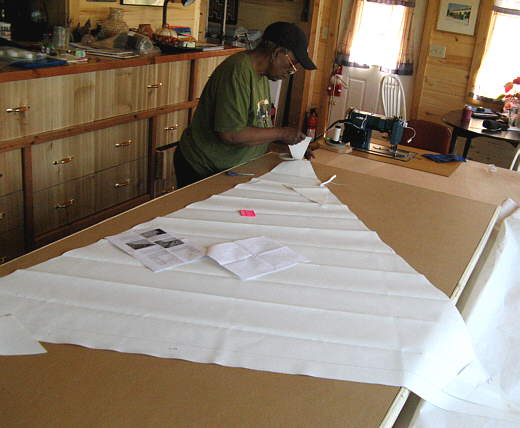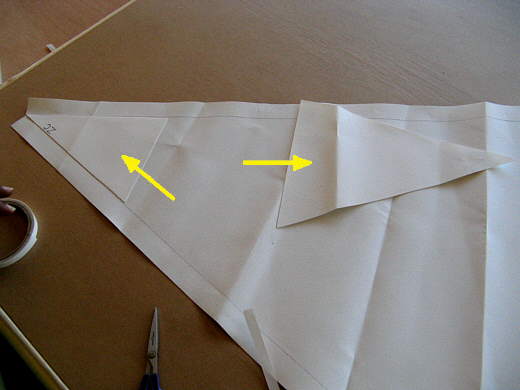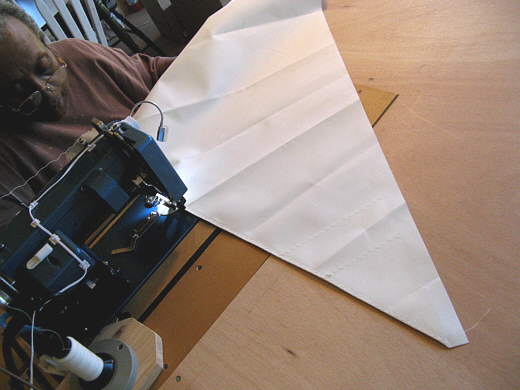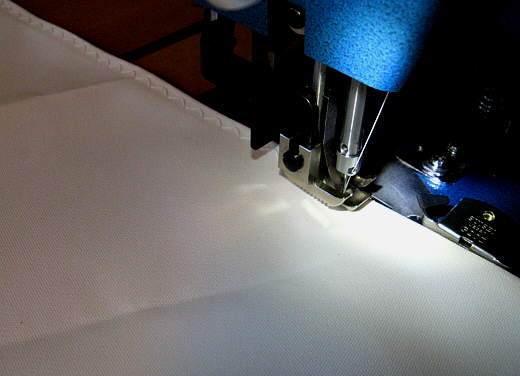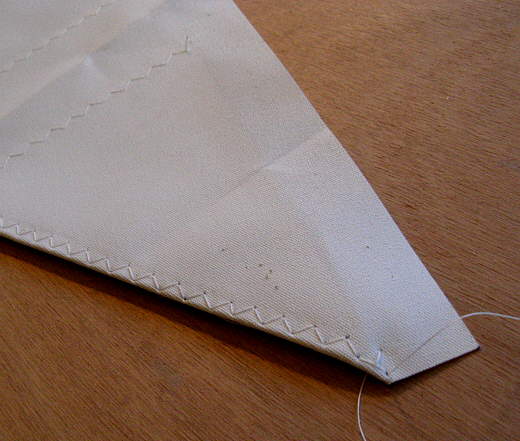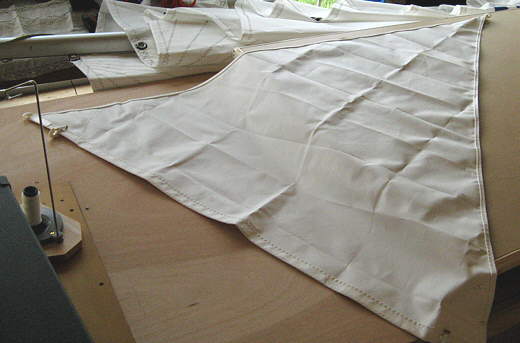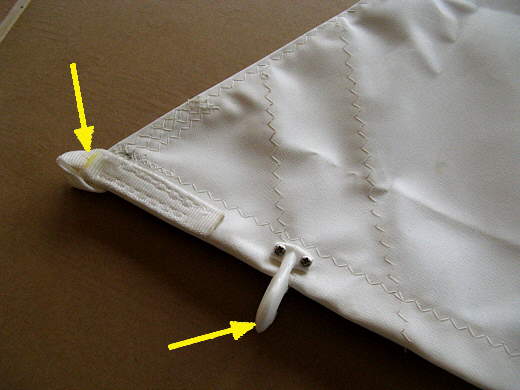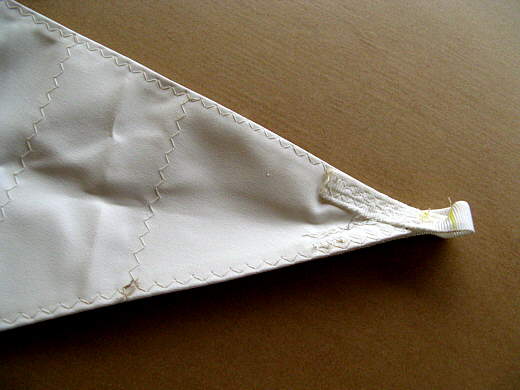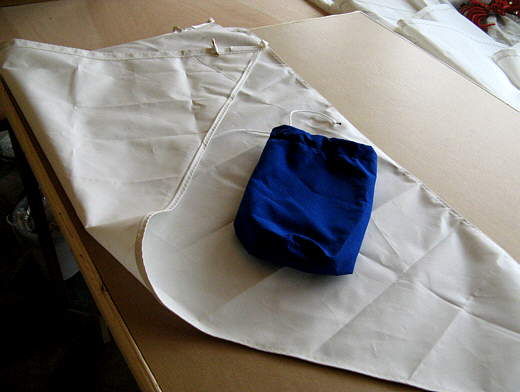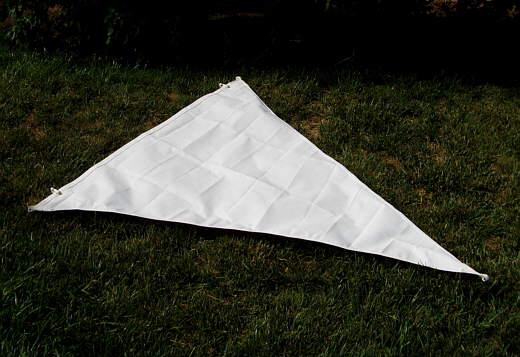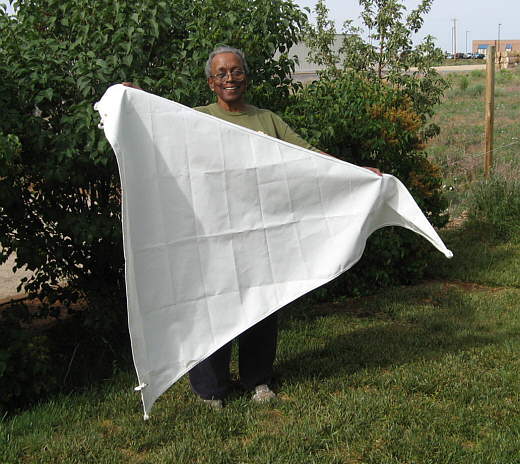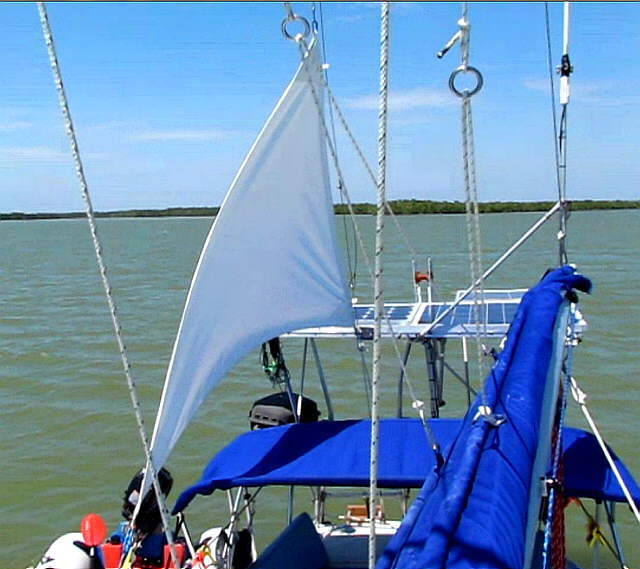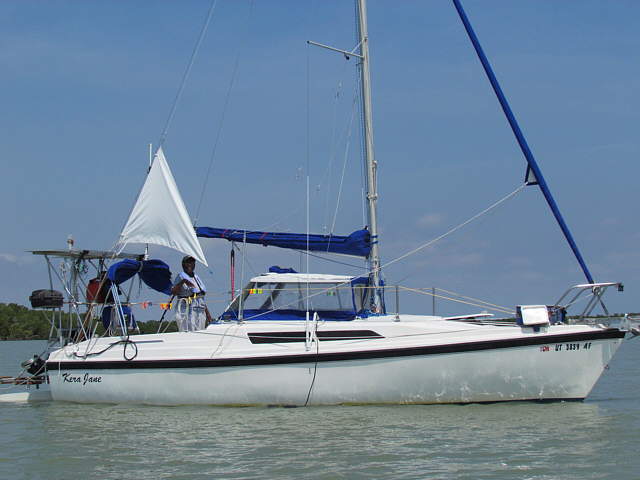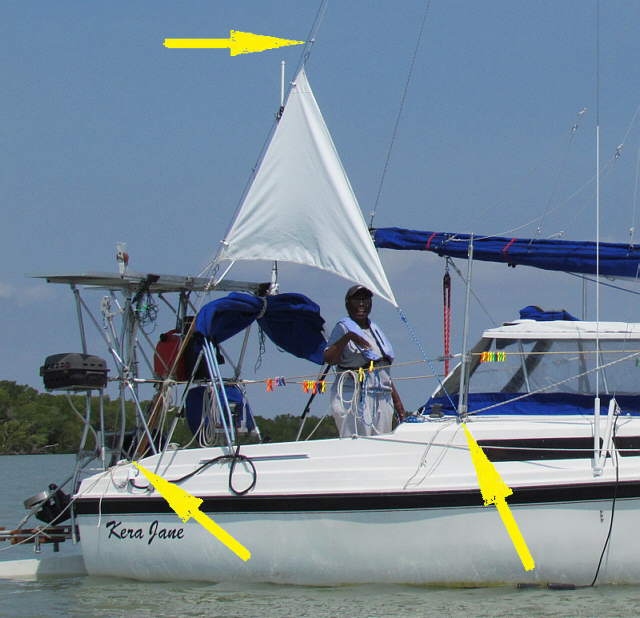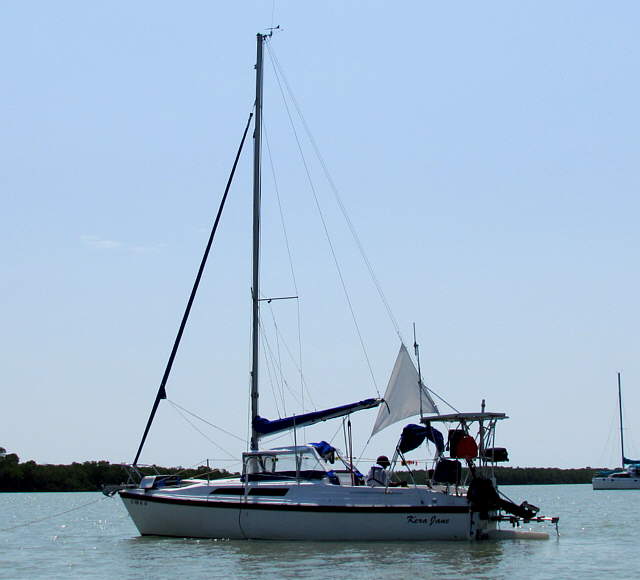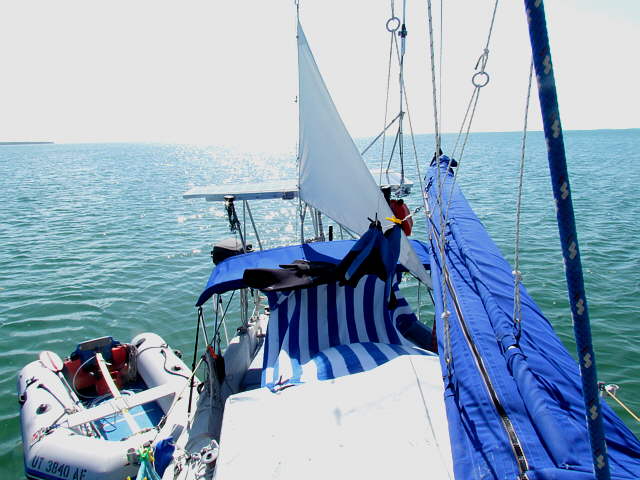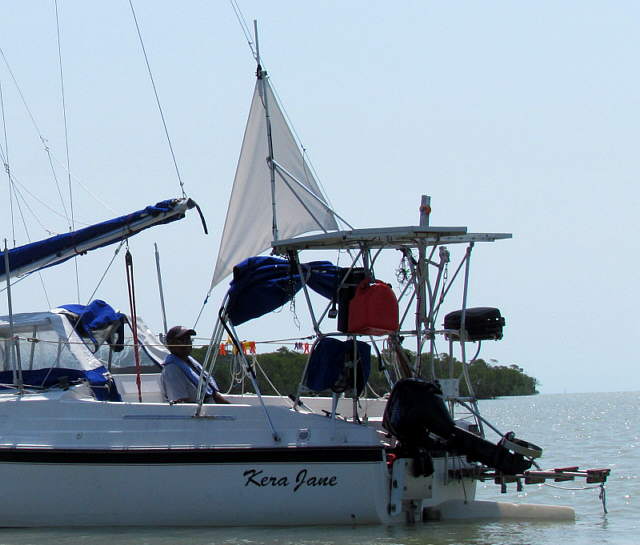..................
..............................................................--- Anchor Sail ---
During our first season of sailing we either anchored or tied to shore (beached the boat) every night and didn't use a marina or mooring balls. There was a number of nights we swung on the anchor. It didn't really bother us all that much, but we heard about anchor sails to help that. We ordered an anchor sail kit from Sailrite and Ruth proceeded to sew it up on the new machine we had just gotten from them also on a 10% off sale. The kit was about $87 when we ordered, but a little more now.
.......
The sail comes cut to shape and has instructions (top arrow) and the hem lines are marked (bottom arrow).
.......
Here Ruth is placing one of the reinforcements for one of the corners in place and pinning it there.
.......
A close-up of the reinforcements for the corners that also come pre-cut.
.......
Here Ruth is sewing one of the hems using the new to us Sailrite Ultrafeed LSZ-1 straight stitch/zigzag sewing machine with a walking foot. This machine has features our old Singer Industrial doesn't have, but this would of been an easy project for the Singer also.
.......
The Singer can't do a zigzag stitch, so two rows of stitches would have been necessary on the hems. Two rows is not weaker than the zigzag, just slower to do.
.......
Here you can see that the reinforcement has been sewn in and the hem finished on one side.
.......
The finished sail.
.......
The right arrow points to one of the two Piston snaps that are used to hank the sail onto the backstay. The left arrow points to the webbing that is in all of......
.......
.... the corners and is used to attach the sail to the boat and to up-hauls and down-hauls.
.......
Here is the sail with one of the bags that Ruth had made previously.
.......
The bag and sail makes for a very small package about 10 inches high to the tie.
.......
Laying out in the grass and..............
.......
... in the hands of the happy sailmaker. She did a nice job on this and she might do our storm sail also.
.......
Here the sail is at work in the 10,000 Island area just north of the Florida Everglades. After some experimenting with the sail higher on the backstay on our Fall of 2010 Florida trip and having mixed results with it there we tried it down about as far as we could get it on the backstay. This finally really worked and we felt a lot more comfortable with it up in higher winds (over 20 mph). It made less noise and didn't cycle as much filling first on one side then the other. The boat also seemed to swing even less.
.......
A view of the sail from the starboard side of the boat.
........
To the right of the sail you can see that the boom is held up with a topping lift. I changed out the single block at the top of the mast to a double block. The topping lift goes through one sheave and an uphaul line (1/4 inch) goes through the other sheave on the block. The line goes down to a cleat near the bottom of the mast and the end for the anchor sail has a SS carabiner on it. It snaps onto the top of the anchor sail, top arrow.
There is another line that attaches to the bottom of the sail on the backstay and it is tied off lower down on the stern of the boat, bottom left arrow. We leave that line tied on and ready to go all the time we are on the water. I hook it up on the solar array when not in use.
There is another line that is permanently tied to the sail at the forward bottom edge, bottom left arrow. It ties off to the bottom of the stanchion where the arrow is. Tying off to the side is what Sailrite and others recommend and not down the centerline of the boat.
Also notice in these pictures that the rudder is up and tied so that it is centered. Also we always pull the centerboard up on anchor. It makes less noise. With the rudder and CB up if we were to swing into some shallow water or an underwater obstacle they wouldn't be damaged by a side force on them.
........
It only takes a minute to deploy the sail. I hank it on to the backstay with the two snap hooks on it.
Next I'll take the bottom stern line and unhook it from the solar array and snap it onto the bottom of the sail. Then I'll unsnap the uphaul from the mast and hook it onto the top of the sail and hoist it up and cleat it off.
The final step is to take the line that is permanently left on the sail and pull it down to the bottom of the stanchion by the cabin and pull the sail taut and tie it off. You are now done.
........
Later in the trip I started tying it to the port-side stanchion as we normally have the dinghy tied to the starboard side of the boat and it is easier for me to get in and out of it over the coaming without the anchor sail line on that side. It seems to work equally well on either side even though the backstay on a S is slightly off the centerline of the boat.
........
We like the anchor sail and it goes up very quickly. When it is down Ruth folds it up and wraps the permanent line around it and we store it below. It doesn't take up much room at all. We don't put it up everyday, but most days. We now also have it up in winds over 20 mph, but if I think that the winds are going to be in excess of 25 mph sustained we take it down.
Let's end with a couple videos of the anchor sail in action anchored in the 10,000 Islands of Florida just north of the Everglades. The first video is looking aft. If you watch the right shoreline disappear and the left appear you get an idea of about how much the boat was swinging. The second is at the same anchorage taken at the same time from the bow. There again you can look at the anchor rode in the water and get a feel for the swing. I honestly can't remember how fast the wind was blowing, but would guess around 12-15. You can hear it. Without the sail we would of been swinging faster and much further...
Aft Video: http://www.youtube.com/watch?v=vkLbyBld1lY
Bow Video: http://www.youtube.com/watch?v=MKjU842c9Zo

